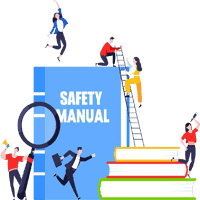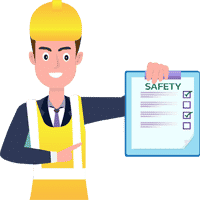 How to Get Cor Certified
How to Get Cor Certified
If you’re looking to achieve Cor certification in Canada, you’ll need to start by understanding the requirements. This article will outline everything you need to know in order to become certified. We’ll also suggest some resources that may help you along the way. So if you’re interested in becoming a COR professional, read on!
 Certifying Partner
Certifying Partner
First of all, you’ll need to find a certified partner. A certified partner is someone who has been accredited by Worksafe as a certifying partner. You can usually find a list of certified partners on their website.
To be eligible for certification, an organization must meet certain requirements. These include having safety management systems in place and complying with national and international safety standards.
 About COR
About COR
COR is a safety management system certification organization. Their certified partner program offers individuals and businesses the opportunity to get certified in various safety disciplines, such as First Aid/CPR, Corrosion Control, and HazMat Operations.
 Requirements for Certification
Requirements for Certification
In order to become certified with COR, you’ll first need to meet the requirements outlined on their website. These include having a safety management system in place that meets all national and international safety standards. Additionally, your program must be reviewed and approved by the certifying partner.
COR benefits
 There are several main benefits to being cor certified. first, you get a WCB rebate every year on your WCB premiums. You can get up to 20% if you are operating safely. The second benefit is often it is a requirement to have a Cor program in order to bid on some jobs. This cuts the biding list down to those who are serious about safety and don’t take shortcuts doing the job. Another huge benefit is keeping your injury frequency rate low. Cor companies mostly use modified work programs to bring injured workers back to work far quicker and with reduced costs to claims on WCB. Many companies have a ceiling for injury frequency rates and won’t let a company work for them unless that rate is less than 5.
There are several main benefits to being cor certified. first, you get a WCB rebate every year on your WCB premiums. You can get up to 20% if you are operating safely. The second benefit is often it is a requirement to have a Cor program in order to bid on some jobs. This cuts the biding list down to those who are serious about safety and don’t take shortcuts doing the job. Another huge benefit is keeping your injury frequency rate low. Cor companies mostly use modified work programs to bring injured workers back to work far quicker and with reduced costs to claims on WCB. Many companies have a ceiling for injury frequency rates and won’t let a company work for them unless that rate is less than 5.

Steps to achieving COR®
- Pick your certifying partner or find out which one is for your industry
- Take the required training courses from the certifying partner.
- Build your health and safety manual either from the examples they give you or hire a company like Calibre Business Solutions to build the manual for you.
- Collect the documentation for a minimal amount of time as suggested by your certifying partner.
- Conduct a mock audit or a baseline audit on your company and correct any deficiencies you might have discovered.
- Call the certifying partner and set up your certification audit.
- Once the certification audit is complete, fix any deficiencies and keeps documentation for your next maintenance audit, which will be within one year of the anniversary of your certification.
 Maintaining COR® Certification
Maintaining COR® Certification
An audit is completed on your safety program annually and submitted to the certifying partner. The two audits in between the certification audits are called maintenance audits. These audits can be completed in-house if you send your safety coordinator for auditor training. A Cor Program must be audited by a certified auditor at least once every three years.
 COR® Equivalency/Reciprocity
COR® Equivalency/Reciprocity
if you have an ISO Certification 450001 this is considered the equivalency of cor certification in Canada. ISO certifications are usually used by companies that are international and don’t just operate in Canada. This way they can make changes globally and they will be acceptable here in Canada.
 Why should your company have COR®?
Why should your company have COR®?
COR certification provides a level of assurance to the public and the regulatory community that your safety management system is effective. Certification also demonstrates your commitment to safe work practices and can provide you with a marketing advantage. It will allow you to bid on all jobs in your field and won’t hold you back from working anywhere. It will also give you a financial advantage with the rebates you are getting while others are not.
 Large Employer Audits
Large Employer Audits
Sometimes when large companies get their cor audits they use audit teams and do what is called a roll-up audit. This is where multiple teams converse on different sites and then combine their findings to prepare a big-ass audit that mama would be proud of.
 COR Organization Self Assessment
COR Organization Self Assessment
A self-assessment is the same idea as a baseline audit. You go through all of your documents, and interview groups of workers in order to find out where your company stands as far as Cor certification goes. This should be done each time a company gets a new health and safety coordinator. This prevents people from constantly blaming the old system.
 Who Should Get COR?
Who Should Get COR?
Any construction companies, forestry, mining, manufacturing, and service industries. The only companies that do not need a cor are companies that do accounting or record keeping. typically these industries don’t have WCB accounts. The law says you must orientate your workers when you hire them, it says they have a right to be informed of any dangers on the job, and they have the right to refuse unsafe work. A Cor program covers all of these laws and makes you compliant if you follow the cor program.
 Register for COR
Register for COR
Call your certifying partner and they will get you set up and let you know what you need to do in order to qualify for the cor programs.
 COR Manual
COR Manual
Your cor manual is where all of your procedures, policies, safe work practices, and everything related to safety is stored. during the audit, it is what the auditor will be focused on. It is important to have a good manual so do it right the first time. (Calibre Business Solutions builds manuals specific to your business so you can rest assured all you need will be in the manual.)
 COR Audits
COR Audits
COR audits are conducted by certified safety professionals to make sure your company is following all of the cor requirements. If you get audit red flags, it is important to address them as soon as possible so that they do not turn into safety issues on the job. COR certification can only help if there are good policies and procedures in place already.
 What Are Cor Certification Standards?
What Are Cor Certification Standards?
There are basically three things that a cor program must cover: orientation programs, health and safety management systems (HSSMS),
 Why was COR/SECOR developed?
Why was COR/SECOR developed?
Cor and Secor programs were developed in 1990 in Alberta because accidents and incidents were up and they wanted a standard or guidelines to improve safety on worksites. The program has grown and to its credit health and safety stats have come way down since then.
 Certifying Partners
Certifying Partners
A certifying partner is a charitable organization that is recognized by the government and WorkSafe. You can find a list of the certifying partners by googling the list of certifying partners for whatever province you work in. It is important to find the certifying partner that best represents your type of business.
 Services from a Certifying Partner
Services from a Certifying Partner
Each Certifying partner has its own version of a cor program. the questions in the audit reflect the industry they represent. They offer training programs, templates of policies and procedures, and maintain auditors’ lists of approved auditors. They maintain a level of quality control of the auditors that work for them or through them.

What does Cor safety mean?
There is no one answer to this question since safety means different things to different people. However, here are a few of the basics:
– Cor safety means taking all necessary measures to protect workers from harm while they are on the job.
– Cor safety includes having safe work environments and practices that help prevent injuries and fatalities.
– Cor certification can help employers get audited and certified in compliance with cor standards.

What is COR certified?
COR certification means that the employer has met all of the requirements of a cor program and is in compliance with provincial safety standards.
 Is Cor mandatory in Ontario?
Is Cor mandatory in Ontario?
The simple answer is no although more and more organizations are requiring companies to be cor certified in order to bid on certain types of work. It is also the law in Ontario that orientations must be done for new workers. Hazard assessments must be done and corrective action on outstanding hazards must be completed before any work is done.




